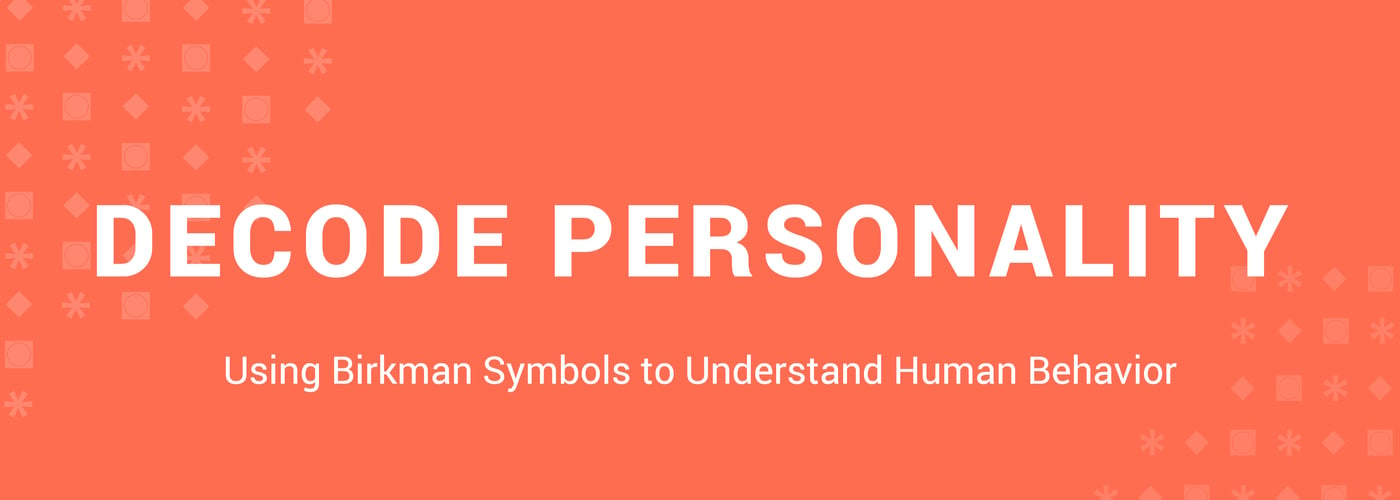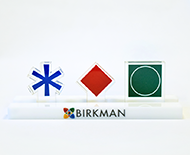
The four Birkman symbols represent different dimensions of personality, each of which describes a unique aspect of one's approach, style, or motivations. These symbols are the Asterisk, Diamond, Circle, and Square. They represent one's Interests, Usual Behavior, Needs, and Stress Behavior, respectively.
Birkman maps personality with these symbols by assigning a color to each one to represent your unique personality! Check out detailed descriptions for each symbol, as well as their associated color characteristics below.
Interests are represented by the Asterisk, which reflects what you like to do and what activities you gravitate toward—in other words, your motivators. The Asterisk indicates what types of activities give you the most satisfaction.
 |
Red Interests |
Likes to build, see a finished product, solve problems, work with their hands, make things happen, work outdoors
|
 |
Green Interests |
Likes to work with people, debate, persuade others, sell ideas or products, motivate others, teach
|
 |
Blue Interests |
Likes to visualize possibilities, generate ideas, connect individually, innovate, involve music or art in life
|
 |
Yellow Interests |
Likes to analyze data, document processes, measure improvement, put things in order, systematize, track
|
The Diamond, or Usual Behavior, is your strength behavior and what others notice about you. Usual Behavior composes your most productive style; therefore, it is how other people see you. When your Needs have been met, you demonstrate this behavior.
|
|
Red Usual
|
Shows up as decisive, direct, assertive, energetic, logical, and matter-of-fact
|
|
|
Green Usual
|
Shows up as competitive, enthusiastic, flexible, inclusive, responsive, outgoing, social, talkative
|
|
|
Blue Usual
|
Shows up as expressive, suggestive, tactful, quiet, respectful, harmonious, thoughtful, caring
|
|
|
Yellow Usual
|
Shows up as independent, cautious, conscientious, reliable, focused, systematic, structured
|
Needs, represented by the Circle, are your expectations from others and your environment. This is how you want to be treated by other people, how you want to be supported, and your preferences. A person's Needs are mostly hidden or invisible to others.
 |
Red Needs |
Comfortable with having direct authority, tangible results, low emotional situations, frank feedback, decisiveness, debates on issues, see results
|
 |
Green Needs |
Comfortable with group interaction, business networking, loose parameters, recognition for results, direct competition, a busy social calendar
|
 |
Blue Needs |
Comfortable with democratic leadership, patience for results, personal connection, cooperative team style, personal space to be honored, minimal group meetings
|
 |
Yellow Needs |
Comfortable with clarity of expectations, compliance with rules, consistent feedback, few interruptions, leadership with integrity, independent work
|
The Square indicates Stress Behavior, a reactionary, unproductive behavior that kicks in when you are frustrated or when things happen outside of your comfort zone. When a person has not had their Needs met for an extended period of time, they often begin to demonstrate Stress Behavior.
 |
Red Stress |
React by becoming aggressive, cold, impatient, impulsive, sarcastic
|
 |
Green Stress |
React by becoming distracted from priorities, disorganized, defiant to authority, self-promotional, overly competitive
|
 |
Blue Stress |
React by becoming discouraged, indecisive, hypersensitive, isolated, melodramatic
|
 |
Yellow Stress |
React by becoming rigid, bound by procedures, resistant to change, inflexible, or having analysis paralysis
|
Will the Needs and Stress Behavior symbols always be the same color?
Yes. Needs are what you expect from others and your environment. When we are put into an environment that does not meet our Needs, we may go into Stress Behavior. This is a natural and normal reaction in having to perform despite not having your Needs met.
With Stress Behavior, we act out as an attempt to get our Needs met, but in an unproductive way. Therefore, Stress Behavior has the same color as Needs because they're closely related aspects of personality.
Is it common to have all colors the same or different for the four symbols?
There is no common pattern. You may have one, two, or even three different colors. The wide range of symbol color combinations reflects the diversity of personalities in the world. These symbols provide an easy-to-grasp visual, but every person, with their own Interests, Usual Behavior, Needs, and Stress Behavior, is complex and wonderfully unique!
|
.png?width=400&upscale=true&name=Horizontal%20Logo%20RGB%20(1).png)


birkmanbands_web.png?width=380&height=310&upscale=true&name=(s)birkmanbands_web.png)

